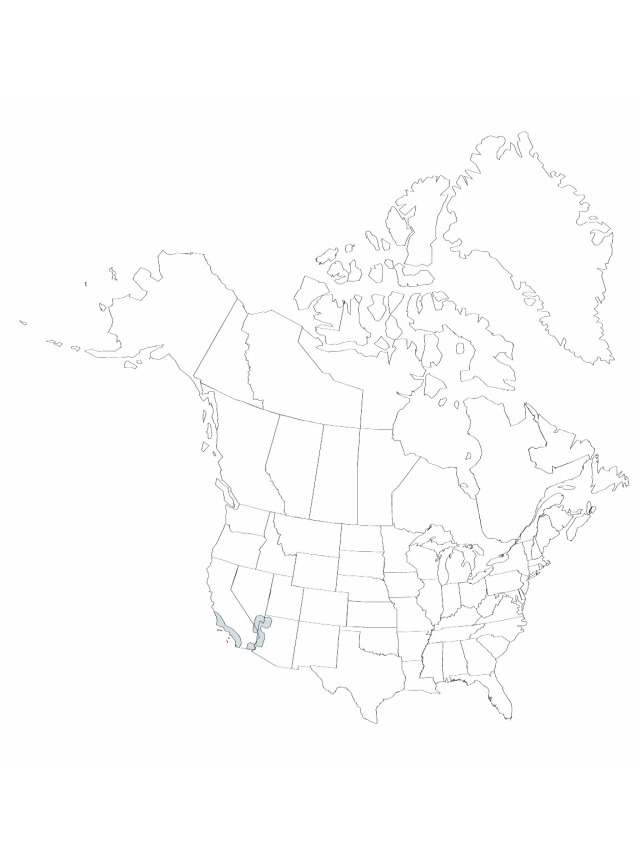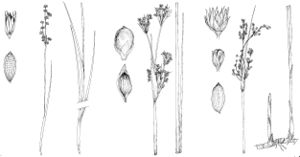Difference between revisions of "Juncus acutus subsp. leopoldii"
Bot. Not. 131: 187. 1978.
FNA>Volume Importer |
FNA>Volume Importer |
(No difference)
| |
Revision as of 20:57, 16 December 2019
Herbs, perennial, robust, tufted, often forming clumps to 1 m diam., 6–12 dm. Culms 3–4 mm diam. Cataphylls 1–2. Leaves basal, 2–4; sheaths brownish, inflated; auricles absent or prolonged 1–3 mm, cartilaginous; blade terete, 30–100 dcm × 2–3 mm. Inflorescences sympodial or appearing lateral, glomerules numerous, each with 2–5 flowers, branches unequal, 5–20 cm; primary bract inflated, usually shorter than inflorescence. Flowers: tepals straw-colored, brown-tipped, 2–4 mm; outer tepals widely lanceolate, margins scarious, apex obtuse to acutish; inner tepals rounded, shorter; stamens 6, filaments 0.2–0.4 mm, anthers 1.2–1.8 mm; style 1–1.2 mm. Capsules yellow-brown, pseudo-3-locular, nearly globose, 3.5–5 × 2.4–3.3 mm, obviously exceeding perianth, mucronate. Seeds brownish, obliquely obovoid, body 0.6–0.7 mm, tails 0.2–0.3 mm.
Phenology: Flowering and fruiting late spring–summer.
Habitat: Moist saline habitats and alkaline seeps
Elevation: below 300 m
Distribution

Ariz., Calif., Nev., Mexico (Baja California), South America, South Africa, Atlantic Islands.
Discussion
Selected References
None.
